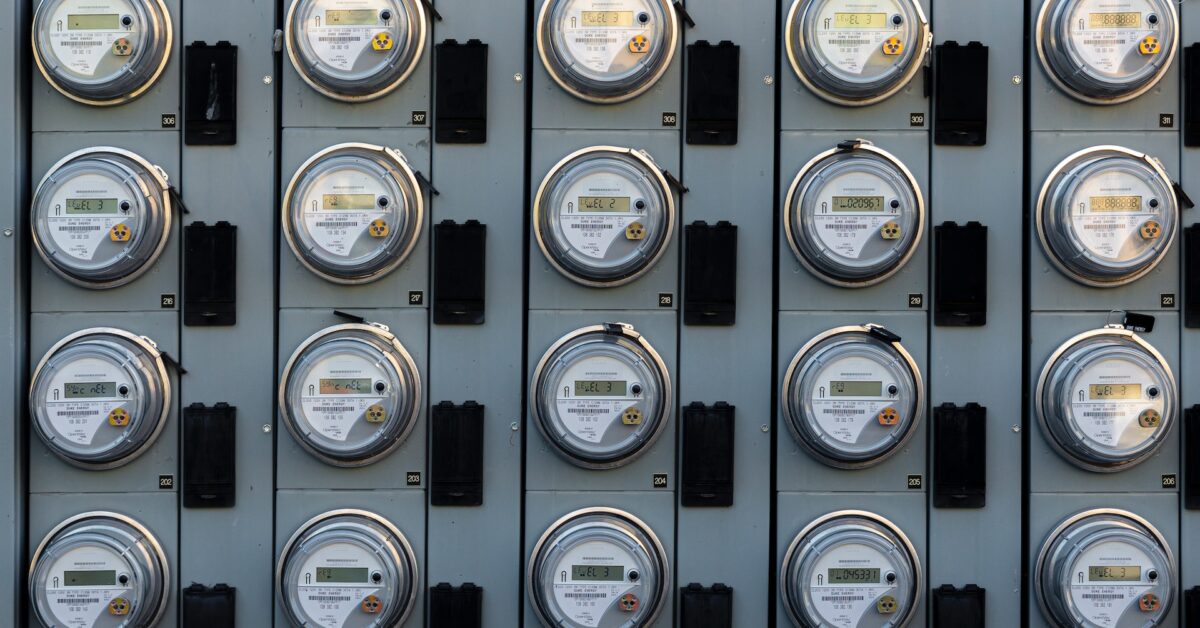Your electric meter tracks how many kilowatt-hours (kWh) of electricity you use. Historically, these meters required power company employees to physically walk around your neighborhood and take readings by hand. Most older electrical meters are a series of dials that look like clocks. You read them by looking at the dials and counting the numbers they seem to point at (or between). Some are more complicated than others.
Digital Meters
Many meters still use an analog display. These are often easy to read, but you must know when to look. You’ll need to take an initial reading on the first day of every month, followed by a second reading on the last day of the month. You can then compare the two to see how much energy you use.
The meter also has a safety feature called the ‘cut out,’ a fuse that will blow if the electricity supply is overloaded. It prevents electrocution and fire. A meter is connected to the mains line by wires, which run in and out; live lines are brown, and neutral ones are blue.
Inside the meter are small gears that rotate as your home draws electricity. The more electricity is used, the faster these gears turn, and the number of revolutions recorded is recorded in units of power known as Watts, with 1,000 Watts equalling a Kilowatt. It is how your power company figures out how much to charge you on your utility bill.
Digital meters work similarly, but instead of dials that spin, they show the current usage on an LCD screen. When you are ready to read the digital electric meter, you may need to press a button to light up the display. If the pointer on a dial points directly at a number, write that number down. If it’s between two numbers, take the lower number.
Mechanical Meters
In some older homes, you may still have an electromechanical electric meter. These meters are simple to read: you have to subtract the number at the beginning of a period from the number at the end. These numbers represent how many kilowatt hours (kWh) you used in that period.
The power company can calculate your usage using this information and bill you accordingly. They can also use it to place you on time-of-use rates based on the energy you consume at different times of the day. These meters work by having conductor coils that create magnetic fields.
When electricity passes through the coils, they produce a rotation of an aluminum disc at a controlled rate. This rotation is recorded on a series of dials indicating kWh electricity consumption. The number on the far left dial represents tens of thousands of kWh; the dials moving to the right represent hundreds, tens and ones, respectively.
Some dials rotate clockwise, while others spin counterclockwise. If your meter has an arrow, look for that indicating the direction of each dial’s movement. Then, look at the hand on each dial and note if it is directly over a number; if not, write down the digit immediately to the left of that pointer.
Analog Meters
As electricity travels through the meter, the shunt resistance develops a voltage across it. This voltage drop is known as burden voltage, and it can affect the accuracy of analog meters. It can also influence external circuit operation if the resistance is too high or too low. The analog multimeters’ voltage, current and resistance measurements are based on a compression-compressed ohms scale (see above).
In the normal mode of operation, a small battery inside the instrument passes a constant current through the device under test while measuring the resulting change in the meter needle deflection. The meter’s internal electronics then read the ohm scale with a resolution of about 0.001 ohm.
Older electric meters can be round or rectangular, with a glass or plastic front and dials that resemble multiple clock faces. They usually have a series of digits and a pointer on each dial, but some are of the cyclometer type, where a single number appears through a window for each dial.
Others are the simpler dial pointer type, with a hand that points directly at each digit and rotates between them. When reading an analog meter, look at all the dials and write down the numbers from left to right. Ignore the digits on the far right. If the hand points between two numbers, always go with the lower number.
Utility Billing
Your electric meter keeps track of your energy consumption and sends that information to the utility company so they can bill you for electricity. It’s important to read your meter at the beginning and end of each period to ensure you’re getting an accurate reading.
If you don’t submit your meter reading to your power company, they will charge you based on an estimation of your usage, which may be found on the average consumption of similar properties, time of year, etc. Reading a digital meter is easy; look at the screen and write down the number of kilowatt-hours (kWh) used. It’s easy to overlook decimals, but they only make up a small part of the reading and will impact your bill slightly.
An analog meter can be more difficult to read, but it’s not impossible. It can be tricky to understand how the dials are indicating your usage. Still, it’s usually a matter of looking at each one and understanding whether they’re rotating clockwise or counterclockwise. Many dials have arrows that show their direction, but you can also look for numbers on each line.
Remember that your power company owns your meter, and should never be tampered with. It’s a sealed unit designed to prevent tampering, and it can be very dangerous to do so. Contact your power company immediately if your meter isn’t working.


